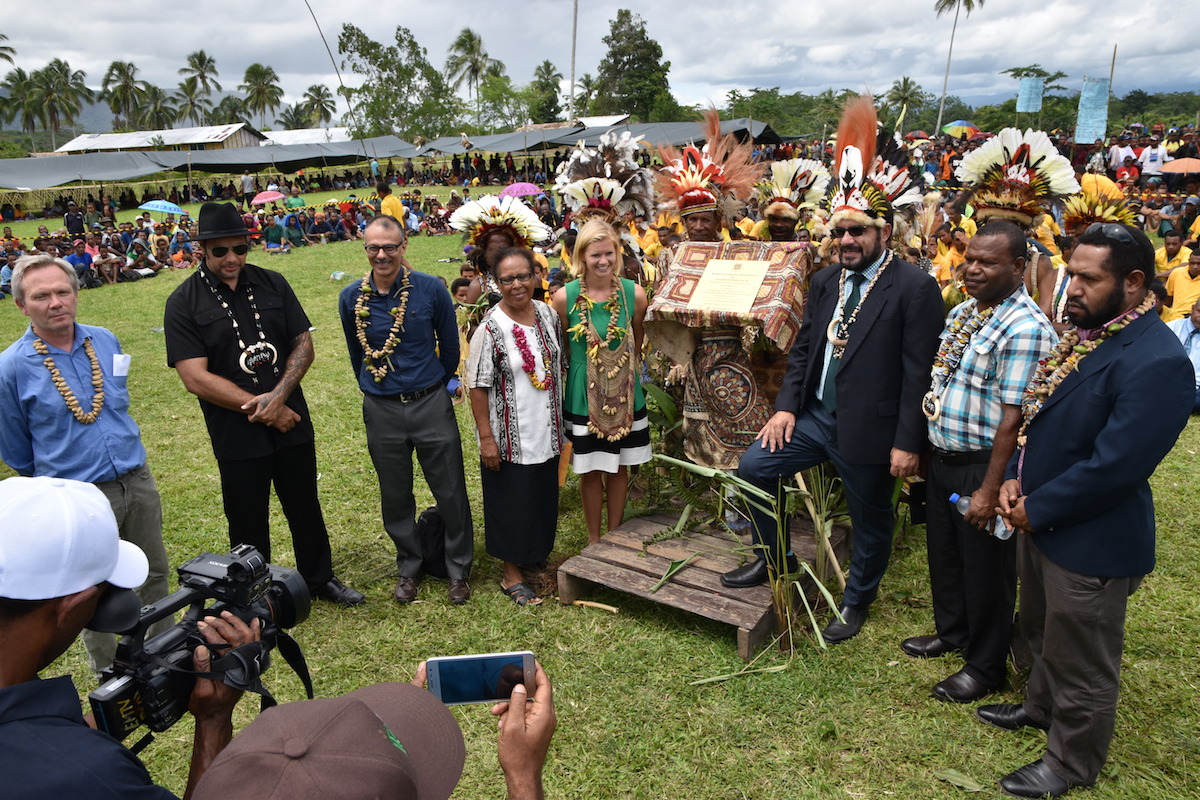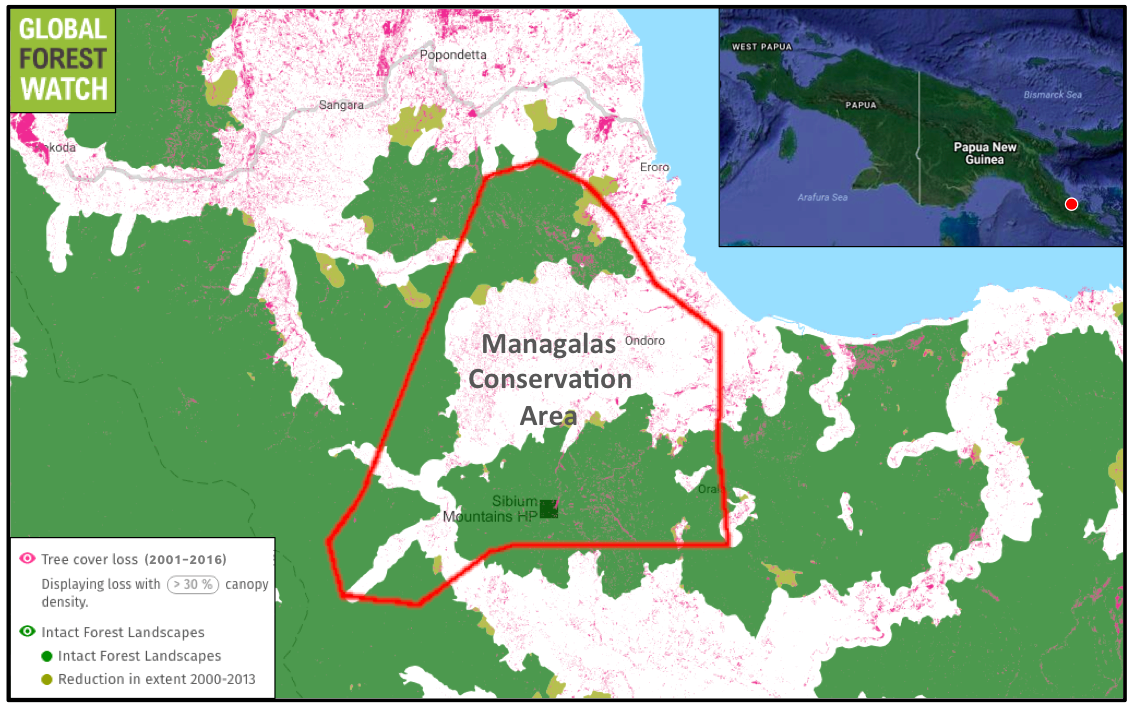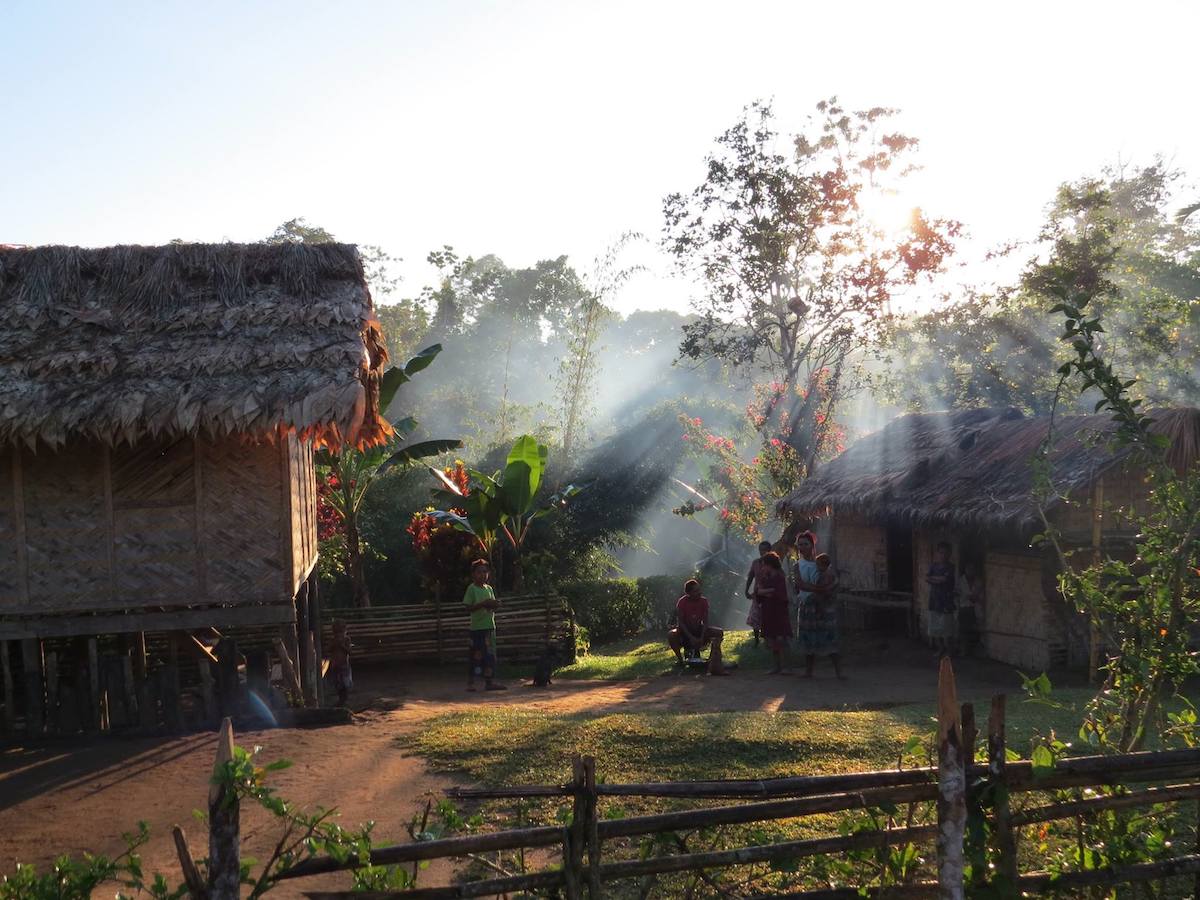- On November 29, government officials declared the establishment of the Managalas Conservation Area. It is Papua New Guinea’s largest conservation area, encompassing 3,600 square kilometers of rainforest.
- Local communities, with the support of governments and non-profit organizations, have been working towards its incorporation as a protected area for 32 years.
- Managalas Conservation Area will be protected from large-scale agricultural and logging operations while allowing the communities that live there to use forest resources and grow crops in a sustainable manner.
- But stakeholders say mining is not officially excluded from the Conservation Arena’s management plan, and are worried about future encroachment by mining companies.
Papua New Guinea has been granted its largest-ever conservation area, a 3,600-square kilometer (1,390-square mile) protected area of rainforest in the country’s southeast that stretches from near the ocean up into the mountains. Called Managalas Conservation Area, the move is being celebrated by conservation organizations and local communities that have been working for 32 years to establish more protections for the region.
Managalas Conservation Area was officially declared on November 29 by Minister for Environment and Climate John Pundari and Northern Governor Gary Juffa at Itokama village.
“Without environment, and without you and I, we will never enjoy the blessings of life,” said Pundari, as reported by PNG’s Post-Courier. “If we lose [the environment], we lose ourselves and that is also a global message.”
Local communities held a party following the announcement to celebrate the declaration, the culmination of their decades of work towards protection of their forests.


The region, called the Managalas Plateau, still has expansive tracts of primary forest. But it has been increasingly eyed by extractive industries like logging and mining, according to Rainforest Foundation Norway (RFN), which is supporting conservation activities in the region. Industrial agriculture is also a big threat, with several areas of the plateau suitable for oil palm plantations.
The Managalas Conservation Area will protect the plateau from most large-scale encroachment, RFN says, while safeguarding sustainable use of forest resources by the 21,000 people that call it home. These uses are described in the project’s long-term management plan, which was drawn up by the communities residing in the Conservation Area, and include both subsistence and livelihood activities like coffee cultivation.
According to RFN, the development of the Conservation Area has already aided preservation of the region by deflecting mining and logging operations. RFN says that when it became known that mining exploration licenses were being issued, conservation organizations and local communities sent letters of protest to authorities arguing that mining should not be allowed in an area earmarked for conservation.
“As a result, the boundaries for the licenses were amended, and the mining company withdrew,” RFN representatives told Mongabay. “And with the establishment of the Conservation Area, the areas marked for logging was also eradicated.”


However, some stakeholders are still concerned about mining, which is not specifically excluded from Managalas Conservation Area’s management plan.
“The decision from the National Executive Council on the Conservation Area states that activities like logging and large scale agriculture is to be excluded from the conservation area. However, it does not mention mining, so that is a concern to us … and the people of Managalas,” said Kenn Mondial of Partners with Melanesians (PwM), a non-profit that has been supporting establishment of Managalas Conservation Area.
While declaration of Papua New Guinea’s newest and biggest conservation area represents a huge step forward in the protection of the region’s forests, much still needs to be done to get Managalas up and running. Next steps include government endorsement of the management committee, which is comprised of tribal leaders, community-based organizations, churches and local governments, and supported by outside organizations like RFN and PwM. After this is done, the committee will finalize the management plan for the area and rangers will be deployed to monitor its implementation in the Conservation Area’s different zones.

Stakeholders would also like to see improvement of the region’s roads so that crops grown by local communities, such as coffee, can reach outlying markets.
“The condition of the roads here is not good. And the bridges are sometimes washed away in heavy rainfalls. So market access for the local produce is a big challenge,” Mondial said. “We need support from the government to improve this. We are also looking for any partner interested in promoting fair trade and organic coffee.”
But for now, local residents and international supporters are focusing on celebrating their pivotal victory in protecting Papua New Guinea’s rainforests.
“For me personally, after working on this project for 14 years, I am satisfied,” Mondial said, “and would like to thank the 21,000 people of Managalas, RFN and the people and government of Norway.”
Banner image courtesy of Rainforest Foundation Norway
FEEDBACK: Use this form to send a message to the editor of this post. If you want to post a public comment, you can do that at the bottom of the page.
